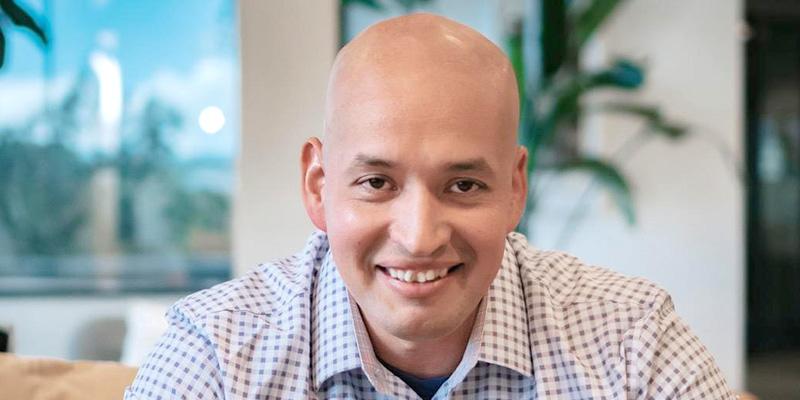At the end of their first college class the other evening in San Quentin, several prisoners in blue dungarees – new inmates – were greeted by a few “lifers” who had encouraged them to give the school a try. The veterans gave the rookies handshakes and hugs.
Three nights a week, San Quentin offers college classes – including courses in history, philosophy, physics and critical thinking – for about 120 inmates. It is the only fully accredited college program in the California prison system.
Inmates, who insist that their studies will aid their re-entry into the outside world, look forward to this respite from their dingy cells. Instructors describe the inmate-students as hungry for knowledge and grateful for those who volunteer to teach them.
Sound like an ivory tower?
“We need to develop strategies to help inmates change their lives so that we don’t create more victims out there,” said Jeanne Woodford, the warden of San Quentin for the past three years.
Besides taking college classes, inmates can learn to read and write at San Quentin. There are programs to earn a high school equivalency certificate and to acquire a vocational skill. Substance abuse, anger management, and parenting workshops are also available. And there are sports programs and religious activities, such as Bible study, meditation and choir.
“When you ask people whether prisons should have more programs, the knee- jerk reaction is, no,” Woodford said. “But when you explain that the purpose of our programs is to hold inmates accountable for their behavior, there’s a great deal of support.”
Woodford’s main goal is to deter future crimes. But perhaps as important, she wants to create positive role models for inmates’ children.
Roughly half of San Quentin’s inmates have kids, and the same can be said of the statewide prison population. According to the warden, studies indicate that 60 percent of the offspring of California’s inmates become felons.
State prisons have a duty, the warden insists, to educate and retool inmates – if only to reduce the likelihood that tens of thousands of children will follow their parents into lives of crime.
Woodford, 46, is one of a new generation of prison officials who is attempting to redefine what it means to be tough on criminals.
The warden doesn’t want to coddle inmates or allow them to fritter away their time. She wants to drag them into classes and workshops – to make a dent in their lives and give them a shot at survival in the outside world.
“San Quentin has always had programs,” Woodford said. “All I’ve done as warden is to expand on programs and to get inmates to the programs. Most of this is done without any expense to the taxpayers.”
Prisons often serve as crime schools. Younger inmates learn from veterans how to become career criminals. Gang members are forced to remain in their gangs. There is little chance for inmates to break the mold. Peer pressure, pride and ignorance keep many inmates out of programs that would otherwise help prepare them for parole.
Woodford wants to create a climate where prisoners learn to lead more productive lives. She wants to foster new role models so that younger inmates can learn from, and avoid the mistakes of, old-timers. Typically, inmates ignore the advice of prison guards, but they listen to other inmates.
Like most of its programs, San Quentin’s college classes rely on volunteers.
A federal law from the mid-1990s restricts the use of tax dollars to provide higher education to inmates.
Nonetheless, studies show that education programs can save taxpayers millions of dollars in reincarceration costs. According to the federal Bureau of Prisons, inmates who attend high school and college classes while in prison are substantially less likely to re-enter prison once released, and the holders of college degrees are the least likely to re-enter prison.
Criminal justice experts praise San Quentin’s recent efforts, but contend that the prison is not doing nearly enough. They stress that only about 25 percent of San Quentin’s mainline inmates participate in its education programs.
Of the prison’s 6,000 inmates, about 3,500 are temporarily housed at the so- called Reception Center – where they are evaluated then transferred to other prisons. Of the remainder, about 600 inmates participate daily in the prison’s classes. Several hundred inmates are also involved in workshops on topics related to health, drugs and parenting.
But the prison’s GED (high school equivalency) program funded by the state is so popular that it sometimes has a two-month waiting list for inmates.
“The principal business of the California prison system from 1980 to quite recently was growing,” said Frank Zimring, a criminal-law professor at the University of California at Berkeley‘s Boalt Hall School of Law. “It was growing so fast that the prisons didn’t have time to do anything else. No one would suggest that it’s been a Golden Age for programs. . . .
“But I hear the warden at San Quentin is a spark plug, that she’s doing great things. Somebody like her could end up having real problems in the system – or running it.”
San Quentin is one of the oldest prisons in the United States, and has the nation’s largest death row. Some of its brick buildings date to the early 1850s, when the prison was built; its paint is peeling; some of its walls are crumbling.
And occasionally, there are rumblings from politicians and bureaucrats who would like to see the prison torn down. Recently, a Marin County task force was formed to consider new uses for the bayfront property if San Quentin is closed, such as proposals for a transit hub and housing.
Still, volunteers and staff in the prison’s programs try to turn inmates’ lives around. San Quentin has a head start on California’s other lockups: There is a tradition of community involvement in the Bay Area prison.
“I think the prison is located right where it should be. It’s in a metropolitan area,” the warden said. “It’s important that society knows what goes on in our prisons. . . . Prisons are a community problem – because inmates are going to parole to these communities, and they are going to impact these communities, positively or negatively.”
About 80 percent of inmates released from San Quentin are paroled to Bay Area counties.
Many of the state’s 32 other prisons – isolated from urban areas in sites such as Susanville and Wasco – have absorbed huge increases in inmate population in recent years. Those prisons have fewer programs for inmates.
“The state used to define success as keeping people out of prison,” said Andy Hsia-Coron, the vice chairman of Smart on Crime, a group that tries to influence prison policy. “A few decades ago, California’s return rate (for inmates) was about 50 percent. Now, it’s somewhere above 70 percent. And they define success as keeping people in prison. . . .
“We’ve been caught in the trap of politicians competing over who’s tougher on crime and what’s more punitive, rather than looking at what can be done to reduce crime and prepare people to stay out of prison,” he said.
San Quentin’s peer counselors address bus loads of inmates in orange jumpsuits who are being processed in the Reception Center. The new arrivals are presented with facts about HIV. They are urged to get tested for the virus and to avoid unprotected sex and the sharing of needles.
“Now and then I see a light come on in somebody’s eyes,” said peer counselor Carl Irons of San Francisco, who is serving a life sentence for murder. “I try to let them know that they can take control of their lives.”
Since 1986, Centerforce, a Marin nonprofit agency, has trained hundreds of inmates to serve as peer educators. The prison has five paid positions for them.
The program “helped me to get up in front of people, to have confidence,” said peer counselor James McDonald of San Jose, who is serving time for selling drugs. “I go home in a couple of months. I haven’t been here for a long time, but I’ve learned a lot.”
George Dykstra, a volunteer teacher in one of the prison’s literacy programs, said: “We’ve had a lot of guys go on to get their GEDs. Some of them couldn’t read a McDonald’s menu before. Now they can read classics like ‘Moby Dick‘ in an abridged form.”
In an English as a second language class, inmates whose native tongue is Spanish learn to read and write English.
“This is a great group of guys. They’re very hard workers,” said instructor Davia Moore, a member of the prison staff.
One of her students, Jorge Amezcua of Pixley (Tulare County), takes two English classes a day. He attends Alcoholics Anonymous meetings on the last Monday of every month. And he takes part in the Father’s Program, a parenting class that, among other things, encourages inmates to read to their children in San Quentin’s visiting room.
Amezcua, who has nine children, is serving time for child abuse. He credits the parenting program with helping him to learn how to control his anger. Due to be released in eight months, he plans to look for work as a mechanic or a field worker.
San Quentin’s associate of arts degree program has been run, since its inception in 1996, by Patten College, an evangelical school in Oakland, which has set up a fund for the program. Twelve instructors and 40 teaching assistants, many of whom are graduate students and faculty from the University of California at Berkeley, also oversee study halls and tutoring sessions.
“All prisons in California should have programs like this,” said Jody Lewen,
the director of San Quentin’s college classes. “It would save the taxpayers millions of dollars. Education is the most effective tool for combating recidivism because it helps make inmates employable and turns them into advocates for education within their own families and communities. They can help their kids with homework, encourage family and friends to finish or go back to school. By doing that, they impact the next generation.”
Lewen, a graduate student in rhetoric, says that inmates are as diverse as the outside population.
“Prisons are full of people with potential and a capacity to learn and recover,” Lewen said. “Most people don’t commit crimes because they are mean. They do it because they know or believe they have no other option. Education gives them other options. Even people with histories of extreme violence can benefit enormously from the opportunity to reflect on the meaning of their own destructive behavior and to think critically about their own lives.”
Inmates with good behavior and a high school education may take the prison’s college courses. The prison is seeking volunteers to track the recidivism rate of these students.
“The college program gives us something to look forward to in life,” said Therrin Clark of Tulare, who is due to be paroled next month after serving 18 months for auto theft. “They open our eyes to things we hadn’t seen before.”
Reading materials for the critical thinking class include Thomas Paine’s “Common Sense” and the U.S. Supreme Court decision in the Bush v. Gore election case. “They are among the most motivated and grateful students I’ve experienced,” said Sumedha Ariely, a visiting Cambridge scholar and teaching assistant.
“I no longer think the way I used to think. I believe that I can achieve,” said inmate-student Maurice Caldwell of East Palo Alto, who is serving time for burglary and has been in and out of prison for a decade. “When I first started, I felt like a kindergartner. But my peers encouraged me. They said, ‘Don’t give up.’ “
For those soon to be paroled, the prerelease program offers three weeks of classes on job skills, interviews, relationships and drug counseling.
“This is the stuff you need to learn in order to be a success out there,” inmate-teacher Nel Butler of Los Angeles tells a “re-entry” class of 27 prisoners.
Butler, who earns $34 a month as a teacher, said later that it gives him “a feeling like I’m actually doing something, helping somebody.”
Brian Shipp of Pleasant Hill, who is serving a life sentence for kidnap and robbery, has taught re-entry classes for two years. He also tutors inmates who are learning to read, and he has taken part in the Squires program, which advises at-risk teens from the Bay Area how to stay out of prison.
“I’ve made my mistakes,” Shipp said. “But for me, as a human being, I have to give. . . . It’s the hardest job I’ve ever had.”
In the Prison Industries Center, inmates have low-paying jobs making and assembling furniture such as office chairs that are sold to state agencies and nonprofits.
“A lot of them come with no experience. ” said Wendy Holmes, an industrial supervisor. “When they leave here, they feel good because they have a skill.”
Eric Rhoads of Crescent City (Del Norte County) took a break from his job spraying a water-based stain on furniture.
“If you want to accomplish something here, I think the administration will help you,” said Rhoads, who has been incarcerated since 1994 for stealing an $80,000 tractor. “If you want to be a blithering idiot, you can do that.”
Rhoads is scheduled to be released later this month.
The prison’s other vocational training programs include dry cleaning, plumbing, auto body, machine shop and printing.
Oakland businesswoman Gwen Jones, who has worked as a volunteer instructor at San Quentin and other prisons for four decades, said she has hired nearly 100 parolees at her manufacturing plant in the past nine years.
Her company, which makes fire trucks and beverage trailers, has a waiting list for ex-felons who want to be trained as welders, electricians and assemblers. “We live in a very unforgiving society,” she said. “I just believe that everyone deserves a second chance.”
Woodford, born and raised in Sonoma County, began her law enforcement studies with the idea of becoming a youth counselor. She majored in criminal justice at Sonoma State University. But after graduating in 1978, she found that San Quentin State Prison was among the few places hiring. She took a job as a corrections officer.
“It’s a really tough job, and I think it’s probably one of the most misunderstood positions,” Woodford said. “You’re here to provide for public protection. That sounds simple if you say it fast. But it means that, you not only need to maintain a secure facility, but to prevent inmates from hurting each other and to assist inmates who want to improve their lives.”
Through the years, Woodford has refined her thinking on what prisons could and should be doing – and the practical realities. “I’m not advocating that the state needs to bring me a bunch of money for programs,” she said.
Criminal justice experts insist that warehousing prisoners will not make the streets safer. Unless inmates are educated and their destructive behavior patterns changed, they are very likely to return to prison.
California’s high rate of recidivism is expensive. It costs the state $25, 607 a year to house an inmate. In 1980, California prisons had 23,000 inmates. Today, the state prison system has 161,000 prisoners.
With an operating budget of $4.8 billion, the California Department of Corrections spends more money on prisons than the state spends on higher education.
Gov. Gray Davis oversees the largest prison-building program in the United States. But funds are scarce for prison education and rehabilitation programs. Most of San Quentin’s programs are funded by private foundations and spearheaded by volunteers.
Like any other trade union, the California Correctional Peace Officers Association tends to look after its members’ economic interests. As more and more prisons are built, more guards are needed. The union’s increased strength is reflected in its huge membership. California prisons employ 40,758 correction officers; 915 of them are based at San Quentin.
As a midlevel state bureaucrat, Woodford is politically vulnerable. But the warden insists that she faces no major obstacles and has staff support for her efforts.
“I think the staff wants programs. They want to do more than just be jailers,” Woodford said. “What staff doesn’t want is to see us babying inmates.
Inmates should handle the details of their lives and treat themselves with respect and treat others with respect.”
This summer, her staff plans to begin an Honor Dorm program for 200 short- term inmates who volunteer to take part in a rigorous schedule of community service hours within the prison, classes and workshops. They will be rewarded with minor perks such as eating first in the cafeteria.
But the prison system has a record of stamping out innovation. San Quentin’s experimental Boot Camp for nonviolent offenders was closed in 1997, amid debate over its cost-effectiveness.
“I think our programs are working,” Woodford said. “For many inmates, this is a total education of heart, mind and soul . . . to show inmates what it means to be a good citizen out there.”
Attribution: This originally appeared on SFGate on February 8, 2002. Read Story
Please note that the Prison University Project became Mount Tamalpais College in September 2020.











